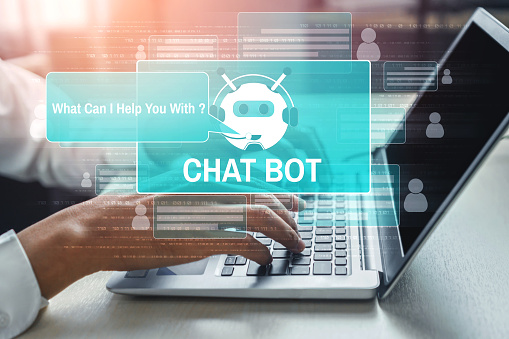Chatbots have been evolving for years, and 2024 marks a turning point in their development. What once felt like rudimentary scripts with limited responses are now advanced systems capable of real-time problem-solving, human-like conversations, and even making business decisions. So, what’s driving the change, and how can businesses leverage this surge in Conversational AI to their advantage? Let’s explore the world of chatbot development in 2024 and see how it’s getting real.
The Evolution of Chatbot Technology
Since their early days, chatbots have moved far beyond simple rule-based systems. The evolution of Natural Language Processing (NLP) and Machine Learning (ML) has drastically improved their ability to understand and engage in human-like conversations. In 2024, chatbot development has truly reached a tipping point where Conversational AI isn’t just a fancy term but a robust tool for automating and enhancing communication.
Companies across sectors are now leveraging AI-powered chatbots for customer service, sales, technical support, and more. The enhanced user experience brought on by these chatbots is reducing operational costs and improving customer satisfaction like never before.
What Makes Chatbots Smarter in 2024?
The underlying technology in modern chatbots has matured significantly. Here are some of the key trends making chatbots smarter and more efficient:
1. Natural Language Understanding (NLU) & Generation (NLG)
Natural Language Understanding (NLU) is all about how well a chatbot can comprehend user intent, which has become incredibly sophisticated in 2024. It allows chatbots to decipher complex language patterns, slang, and even multilingual input, making them more versatile than ever. Meanwhile, Natural Language Generation (NLG) has improved to the point where chatbots can produce detailed, context-aware, and human-like responses.
2. Contextual Awareness
Early chatbots struggled with contextual continuity, often treating every new message as an isolated event. Today’s chatbots are far more contextually aware. They can understand the context of a conversation over multiple interactions, recall previous dialogues, and deliver responses accordingly. This enhances the user experience and provides a seamless and human-like interaction.
Emotion Recognition
One of the most impressive developments in chatbot technology is the ability to recognize and respond to emotions. By analyzing the tone, wording, and even emojis in a user’s message, chatbots can gauge the mood and adapt their responses for better emotional alignment. This makes interactions feel more natural and relevant, improving overall user satisfaction.
4. Voice & Multimodal Integration
Chatbots aren’t just text-based anymore. Thanks to voice recognition and processing, voice-activated AI assistants are more accurate and responsive. With the rise of multimodal chatbots, users can interact using text, voice, images, or even gestures, giving a more dynamic and accessible experience to users of all kinds.
Key Industries Benefiting from Chatbot Development in 2024
The growth of Conversational AI is not limited to a single sector. Several industries are using advanced chatbots to enhance both internal operations and customer experiences:
1. Retail & E-Commerce
Retailers are using chatbots for personalized shopping experiences, assisting customers with product recommendations, order tracking, and even after-sales support. These chatbots can upsell and cross-sell products, significantly boosting revenue for businesses.
2. Healthcare
In healthcare, chatbots are being used to book appointments, provide medication reminders, and offer symptom-based advice. They can connect patients with doctors and specialists and offer quick responses to common queries, making healthcare services more accessible.
3. Banking & Finance
Financial institutions are using chatbots to help with tasks like balance inquiries, transaction updates, and investment advice. In addition, they can assist with fraud detection by alerting users to unusual activities and providing real-time support for financial decisions.
4. Customer Service & Support
Customer service chatbots are designed to handle frequent customer queries, track orders, and process returns. They can help reduce customer wait times and provide immediate, helpful responses around the clock, significantly enhancing user satisfaction.
Future Trends in Chatbot Development
The chatbot space is continuously evolving, and several future trends are likely to shape Conversational AI further in 2024 and beyond.
1. Hyper-Personalization
2024 will see chatbots moving towards hyper-personalization, where they can provide individualized experiences based on a user’s preferences, purchase history, and even browsing habits. This helps businesses build deeper relationships with customers and offers highly relevant content.
2. Improved Multilingual Capabilities
As global communication becomes more critical, chatbots are increasingly being developed to understand and converse in multiple languages with a high degree of accuracy. The trend towards more sophisticated translation abilities will continue, making it easier for businesses to expand into new markets.
3. Seamless Integration with Business Tools
Modern chatbots are integrating seamlessly with CRMs, ERPs, and other business tools. This allows chatbots to access company data, update records in real time, and provide actionable insights, making them valuable assets for any business function.
How Businesses Can Get Started with Chatbot Development in 2024
The first step for businesses looking to dive into chatbot development is to identify the specific use cases for their chatbot. Whether it’s for customer support, marketing, lead generation, or sales, a clear objective will guide the design and functionality of the chatbot.
Choose the Right Platform
Choosing the right platform is crucial for successful chatbot development. While some platforms offer robust AI capabilities for more advanced functionalities, others provide no-code or low-code solutions to help businesses deploy simpler chatbots quickly.
Design for the User Experience
User experience should be the priority during chatbot development. Making sure that the chatbot provides clear options, natural interactions, and quick solutions will drive user satisfaction and adoption.
Continuous Improvement
Once deployed, it’s essential to gather data on chatbot performance and continuously improve it. Regularly updating the chatbot’s knowledge base, refining its responses, and integrating user feedback are critical to ensuring it remains relevant and effective.
Conversational AI in 2024
As chatbot development advances in 2024, Conversational AI is no longer a nice to have it’s becoming a standard business practice. With enhanced NLU, contextual awareness, emotion recognition, and voice capabilities, these intelligent assistants are not only answering questions but delivering superior, human-like experiences that drive engagement and satisfaction.
Companies that capitalize on these advancements stand to gain a competitive advantage by automating routine processes, enhancing customer experience, and improving operational efficiency. Chatbot development is getting real, and businesses that embrace this shift are poised for success in the years to come.








